Posts Tagged ‘£5 Coin’
The history of the iconic Buckingham Palace
Buckingham Palace has been the official residence of the British monarch since 1837, including our very own Charles III and Elizabeth II.
It is quite simply one of the most iconic buildings in the world. From state visits to the daily Changing of the Guard, to the annual garden parties and national celebrations; everyone recognises this picturesque building.
But, did you know that Buckingham Palace was initially called Buckingham House?
Read on to explore the history of this great palace, which features on a brand-new UK £5 coin…
Buckingham House – 1761
In 1761, George III purchased Buckingham House for his wife, Queen Charlotte. Close to St James’ Palace, it proved the perfect home for the Queen who gave birth to 14 out of her 15 children there.
But, with the accession of George IV in 1820, he decided that he wanted to reconstruct the house eventually agreeing with his architect to turn it into a palace.
At the time, George IV told parliament that the reconstruction would cost near to £450,000 – that’s about £55 million today!
The house was doubled in size, adding new suites and state rooms, and the facing was curated from Bath stone, echoing a French neo-classical influence.
In fact, the rooms that were designed over 200 years ago stand the same in the current day.
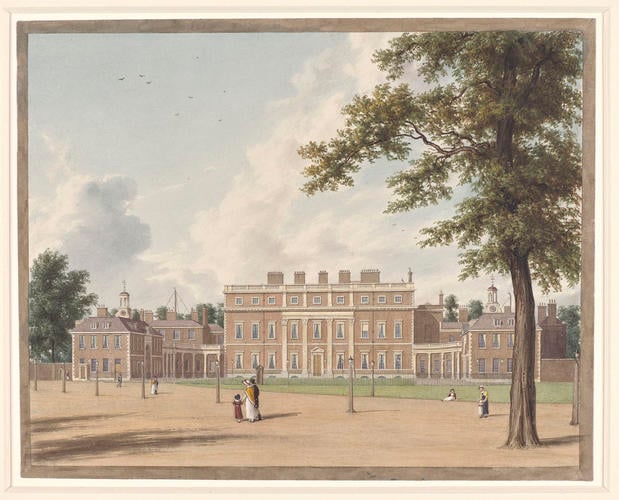
Credit: Royal Collection Trust https://www.rct.uk/collection/922137/buckingham-house-the-east-entrance-front-1819
Queen Victoria – 1837
It wasn’t until 1837, when Queen Victoria ascended the throne, that Buckingham Palace became the official residence of a British monarch.
She was the first monarch to leave from the palace for her coronation, but her marriage to Prince Albert presented some issues. Namely that the palace didn’t have enough nurseries. It therefore went through another construction phase – redesigning some of the inside alongside updating the frontage after soot had ruined it throughout the industrial revolution.

Present Day – 2024
Nowadays, Buckingham Palace is the administrative headquarters of the monarch, as well as the Sovereign’s residence. The palace has 775 rooms, including 19 state rooms, 52 bedrooms and 78 bathrooms.
Every year more than 50,000 people visit as guests for state banquets, lunches, dinners, receptions and garden parties.

Credit: Royal Collection Trust https://www.rct.uk/visit/buckingham-palace
Brand-New UK £5 Coin
To honour the incredible history and sentiment of this incredible British landmark, a brand-new UK £5 coin has been issued.
But stocks are extremely limited, especially of the rare Silver Piedfort edition of which only 800 are available worldwide.
Click here to view the range and secure your memento today >>

Explore the design of the 80th Anniversary D-Day Coins
This year marks the 80th anniversary of D-Day, a day which many historians say turned the tide of World War 2. To honour the courage and sacrifice of the thousands of men and women involved, a special coin range has been released. The main coin design showcases three powerful features: the Spitfire Mk IX, HMS Warspite, and the Sherman Firefly Tank.
Click here to view the brand new coin range commemorating the 80th anniversary of D-Day.
The Sherman Firefly Tank, an upgraded version of the standard Sherman, was a critical component of the Allied armoured divisions landing on the beaches of Normandy.
Explore more about the Sherman Firefly – Watch Our Sherman Firefly Video Now
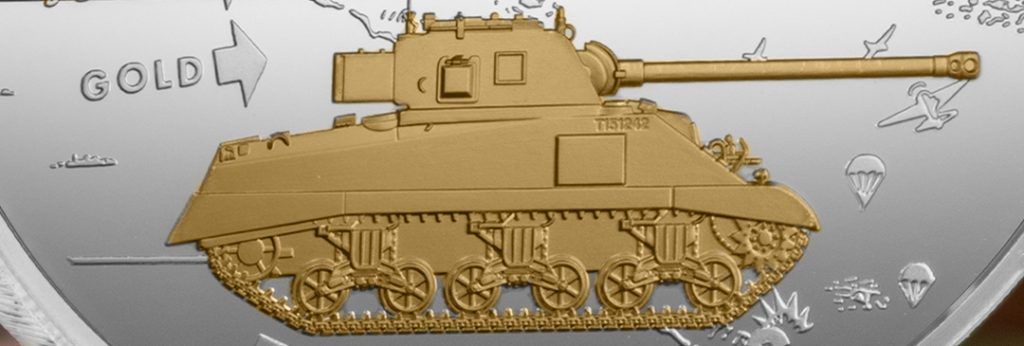
A veteran battleship with a vast history, HMS Warspite steamed into the waters off Normandy to unleash its formidable firepower. During the Normandy landings Warspite was the very first ship to fire upon German coastal defences with its heavy artillery.
Discover HMS Warspite’s Remarkable Story – Watch the HMS Warspite Video Now
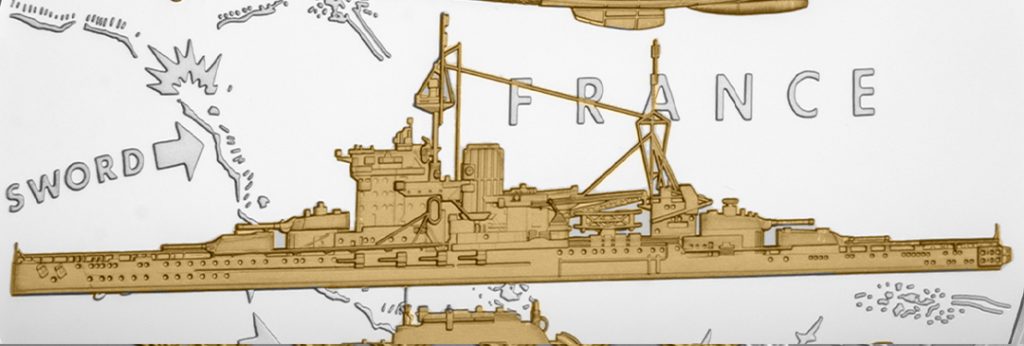
The Spitfire MK IX, a legendary aircraft synonymous with the Royal Air Force, played a crucial role in the Normandy landings. Designed for speed and agility, the Spitfire provided essential air cover during Operation Overlord.
Uncover more about the role of the Spitfire MK IX – Watch the Spitfire MK IX Video Now
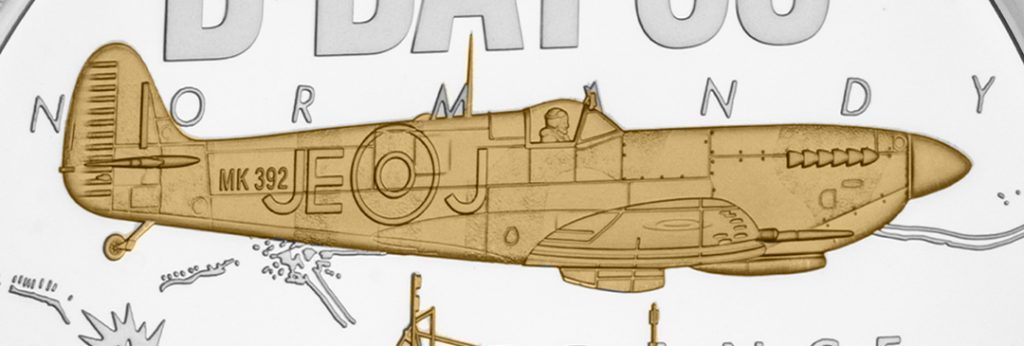
Map of Normandy/France:
The background design features a detailed map of Normandy, with a special focus on the historic beaches of Gold and Sword. These beaches witnessed some of the fiercest fighting on D-Day, as Allied forces sought to establish a crucial foothold on continental Europe. The map design highlights the strategic significance of these locations in the overall success of the Normandy landings.
The Spitfire Mk IX, HMS Warspite, and the Sherman Firefly Tank, along with the map of Normandy, come together on this coin design to tell a powerful story of unity, courage, and the triumph of good over evil.
Click here to view the brand new coin range commemorating the 80th anniversary of D-Day.
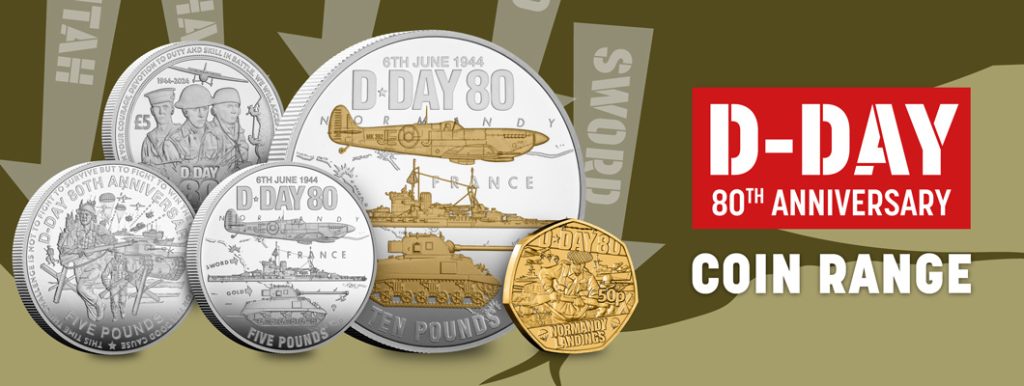
We strive for historical accuracy in our content. If you notice any inaccuracies, please let us know. Your feedback will help us maintain and improve the integrity and accuracy of our information.
Guardians of the Normandy Sky
Click here to view the brand new 80th anniversary of D-Day coin range featured in this video
The Supermarine Spitfire MK IX carved its name in history with its pivotal role during the D-Day landings on June 6, 1944. This aircraft was a marvel of British engineering, an advanced version of the famed Spitfire series, designed to match the German Focke-Wulf FW 190.
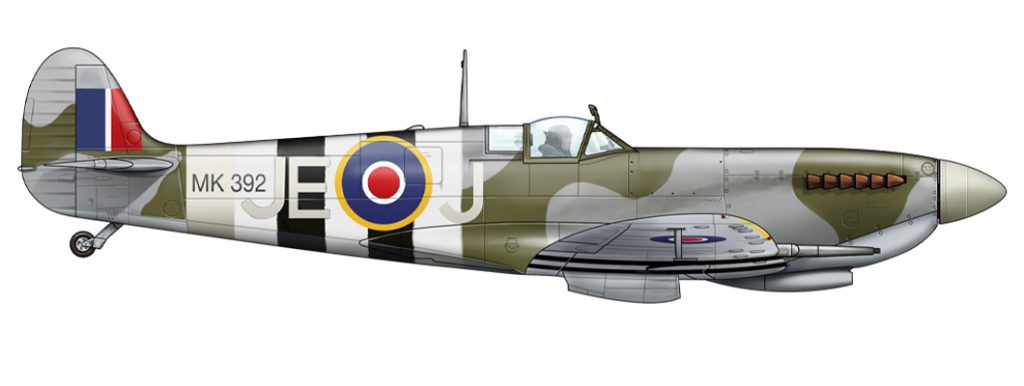
As the Allies undertook the monumental task of liberating Nazi-occupied Europe, the Spitfire MK IX soared above the beaches of Normandy, safeguarding the troops against enemy air attacks. Its iconic Merlin engine provided the power needed to dominate the skies at high altitudes, where dogfights with German fighters were a frequent challenge.
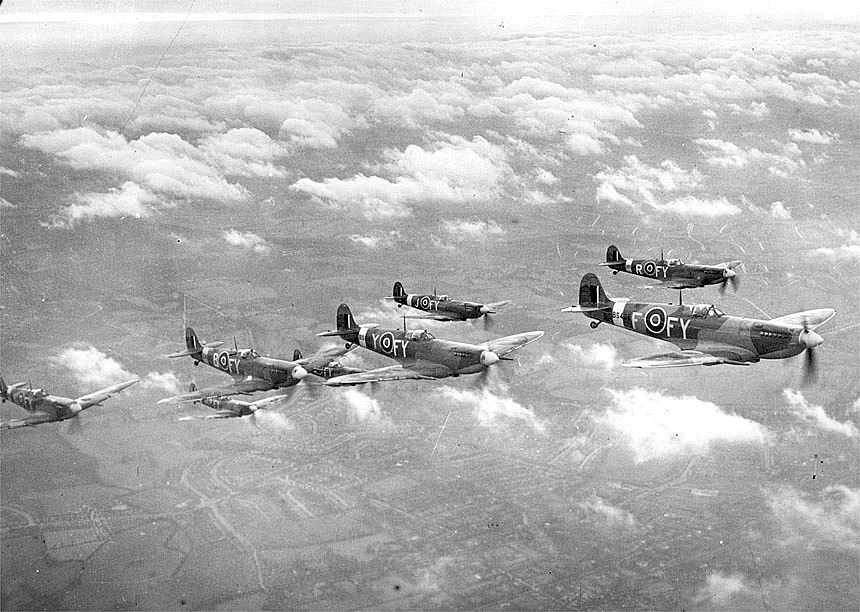
The Spitfire’s duties were not limited to aerial combat. The MK IX Spitfires were crucial in reconnaissance, capturing images of the battlefield that informed Allied strategy. They also strafed and bombed German defensive positions, disrupting enemy fortifications and support.
The presence of the Spitfire MK IX over the Normandy beaches was a reassurance to the Allied soldiers below and a testament to the aircraft’s enduring legacy. On D-Day, it was more than a fighter, it was a protector, an eye in the sky, and a symbol of hope.
Click here to view the other key elements featured on the D-Day 80th Anniversary coin design.
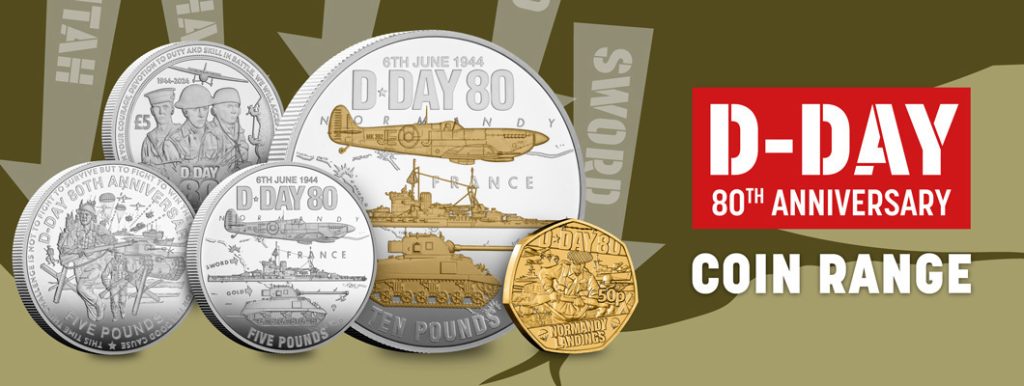
We strive for historical accuracy in our content. If you notice any inaccuracies, please let us know. Your feedback will help us maintain and improve the integrity and accuracy of our information.
